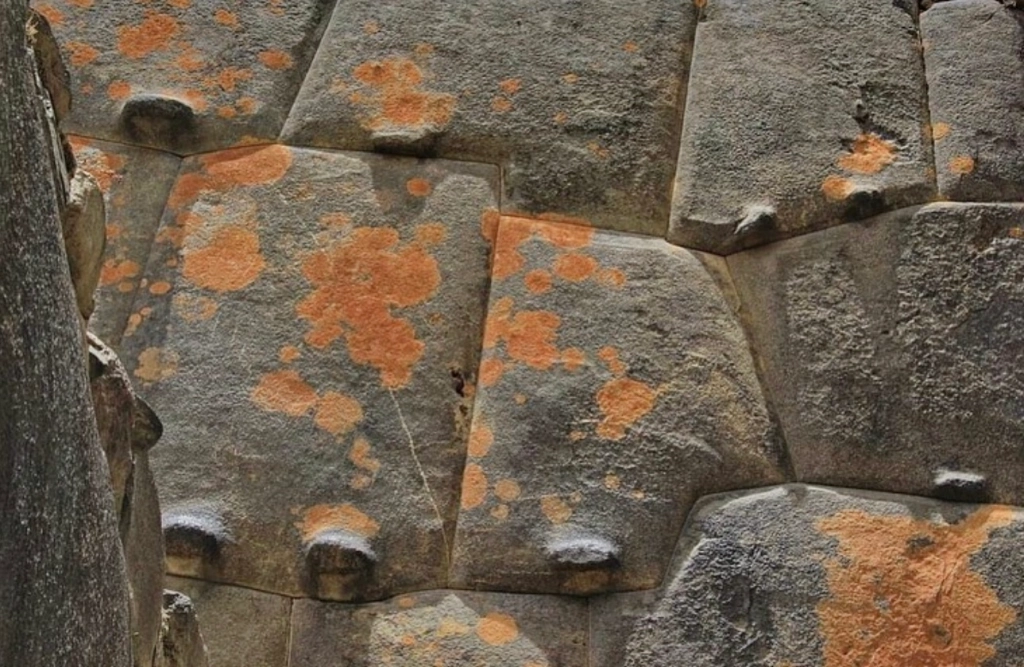
Located in Peru’s “Sacred Valley,” Ollantaytambo is one of the country’s largest archeological sites. As you first enter this megalithic marvel, you become immediately overwhelmed with its larger than life scale that sweeps all the way up the mountainside. One of the first things you notice is what seems like a graveyard of toppled megalithic blocks displayed near the entrance. Some of these blocks resemble those seen at Puma Punku in Bolivia. Massive twelve foot tall agricultural terraces are layered up the mountainside and appear to look like a staircase made for giants when viewed from above.











 1 / 10
1 / 10
Ollantaytambo features a couple of these incredible looking trapezoidal fountains. The Inca were experts at channeling water. However was the original purpose of this structure to move water or did the Inca find it in ruins and retrofit it later for this purpose? What appears to be precision saw-like cuts can be seen at the very top of the site. This does not appear to be a natural crack, but an example of a tool that could cut stone and create flat surfaces.











 1 / 10
1 / 10
The megalithic blocks at Ollantaytambo are covered with the infamous “nubs.” It’s almost as if the ancient architects were able soften the hard andesite stone to marshmallow. This polygonal joinery is so precise that you cannot slide a razor blade through the stones. If the Inca were the original builders of this site as conventional archaeology states, then why wouldn’t they have connected these massive blocks together instead of filling in the gaps with small rocks?











 1 / 10
1 / 10
This amazing structure stands at one of the highest points of the site. The Inca named it the “Temple of the Sun.” This ancient architectural master piece is still standing despite the obvious cataclysm that shook this site long ago. The quarry where the granite was mined to craft these super structures came from across the valley and high atop the next mountain top. How could megalithic builders have transported seventy ton blocks up and down mountain peeks? Are the vertical strips in this wall earth quake proof shims that would allow for this wall to move with the earth?











 1 / 10
1 / 10
One of the most underrated (and amazing) parts of this site is what the Inca dubbed the “Temple of the Condor.” Towering high above on the mountainous outcropping is what literally appears to be a giant Condor. The ancient architects could even shape the mountain itself. At the base of the condor is mortarless stonework and another water source that possess piezoelectric properties. If you run your finger along the lip of the surface in a swift motion, the flow of water stops.






If the Inca were the original builders of everything seen here as conventional archaeology suggests, how could they have precision shaped this harder granite stone (rated 7-8 on the Mohs scale of hardness) with their softer copper and bronze tools (rated 3-4 on the Mohs scale of hardness)? Did an earlier megalithic civilization predate the Inca and build the foundations of this site? Did the Inca arrive at a much later date, find it in ruins, and build around and on top of the megalithic foundations? Does this explain the two distinctly different architectural styles seen here (giant mortarless megalithic engineering vs the small rough stone construction)?




 Wall of Ten Niches
Wall of Ten Niches




 1 / 9
1 / 9
𝐉𝐨𝐢𝐧 𝐮𝐬 𝐭𝐨 𝐞𝐱𝐩𝐥𝐨𝐫𝐞 𝐭𝐡𝐢𝐬 𝐢𝐧𝐜𝐫𝐞𝐝𝐢𝐛𝐥𝐞 𝐬𝐢𝐭𝐞 𝐨𝐧 𝐭𝐡𝐞 “𝐌𝐞𝐠𝐚𝐥𝐢𝐭𝐡𝐢𝐜 𝐌𝐚𝐫𝐯𝐞𝐥𝐬 𝐨𝐟 𝐏𝐞𝐫𝐮 𝐓𝐨𝐮𝐫” 𝐭𝐡𝐢𝐬 𝐎𝐜𝐭𝐨𝐛𝐞𝐫